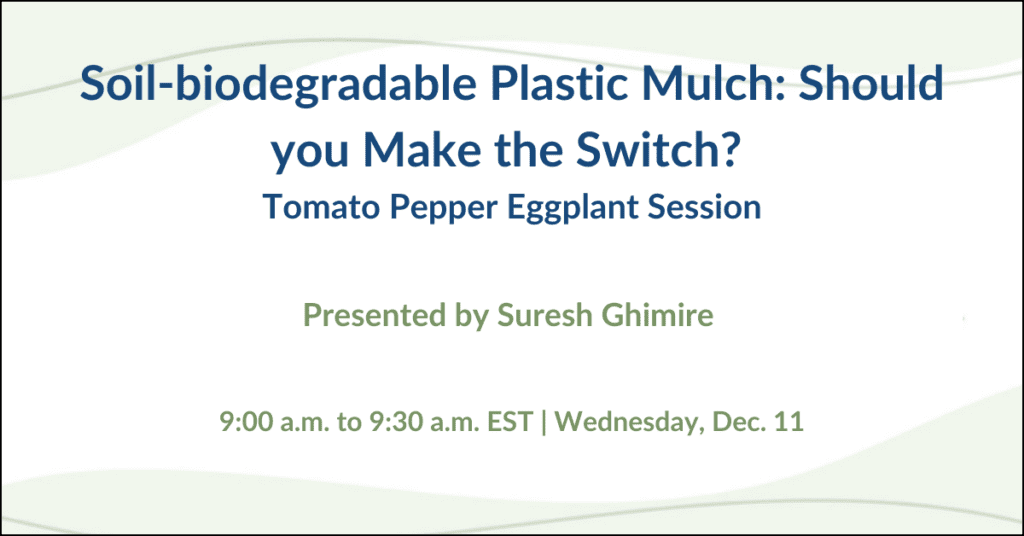
Nov 6, 2024Maximizing crop yield, sustainability and advanced crop management techniques
During the 2024 Great Lakes Fruit, Vegetable and Farm Market Expo, attendees can gain insights into pest management and production practices to maximize yields.
Suresh Ghimire, associate Extension educator and vegetable specialist at the University of Connecticut in Storrs, and Emmanuel Torres Quezada, assistant professor of horticultural science at North Carolina State University in Raleigh, will present research findings to assist growers.

Ghimire specializes in integrated pest management and the use of soil-biodegradable plastic mulches (BDM) with a focus on vegetable production and climate adaptation. He holds a doctorate in horticulture from Washington State University, where his research focused on BDM for vegetable production.
Ghimire will highlight the application of BDM, including the necessary equipment adjustments and how BDM performs throughout the crop season.

“I will also discuss its post-season breakdown following tillage, drawing from our six-year study on BDM degradation,” Ghimire said. “Additionally, I will highlight the potential benefits and challenges of adopting BDM, including its effects on soil quality. This information will help growers make well-informed decisions about integrating BDM into their farming practices.”
Ghimire will also share a video featuring a Connecticut grower explaining how they began using BDM and why they continue using it. “This firsthand experience will offer valuable insight into the practical benefits and challenges of adopting BDM from a grower’s perspective,” Ghimire explained.
Growers who have transitioned to BDM often find it challenging to revert to polyethylene mulch, mainly because of the economic benefits. BDM are tilled into the soil after harvest, eliminating the need for removal and disposal.
Quezada focuses on production practices maximizing plant yield and quality while minimizing the detrimental effects of abiotic stressors. The session will address three key points regarding fumigation — specifically dealing with nematodes, weeds and diseases in tomatoes. The first point will address methyl bromide alternatives.

With the help of a grant from the USDA’s National Institute of Food and Agriculture, Quezada and his team are working to enhance how the fumigant works in planting beds.
“It’s been pretty difficult after the pull out of methyl bromide,” Quezada said. “There has been a lot of effort to identify alternatives. Farmers usually fumigate their crops through shank fumigation, a traditional way to fumigate. We’re testing shank fumigation against other methods for controlling economically important pests.”
This work is supported by the USDA’s National Institute of Food and Agriculture.
Quezada will also explore soil surfactants into planting beds. “Soil surfactants break down the surface tension of the water, making it easier for water to move horizontally rather than vertically,” Quezada said. “We’re experimenting with soil surfactants and seeing if adding it to the fumigation can enhance it.”

Lastly, Quezada will discuss planting bed architecture. “We’re trying to make sure water distribution is more even within the bed to allow the fumigant and water and fertilizers to have plant access,” he said.
This will be Quezada’s first time attending the Great Lakes Expo. “I am happy to be a part of the show. I’m excited to see who is there and hope that what I present will help growers in some way,” he said.

The Great Lakes Fruit, Vegetable and Farm Market EXPO is the premier event for connecting, innovating and growing in the agricultural industry. Engage with more than 4,500 professionals from fruit, vegetable, farm market and greenhouse sectors. Gain insights into the latest innovations and learn how to apply new techniques to overcome challenges and enhance your business.
To learn more about these sessions and more, visit glexpo.com.
















